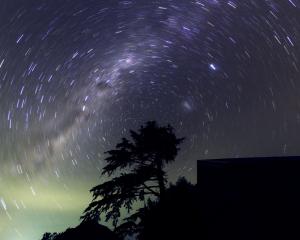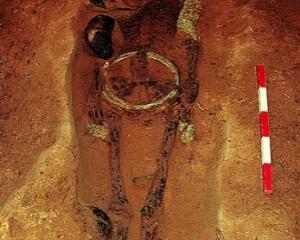There have been several reports recently of plans to set up the Chinese settlement at Lawrence for visitors to view and appreciate this chapter in the history of the Otago goldfields. This reminds me of a comment made years ago by Warren Cooper when he was a government minister, when he wondered "why anyone would bother to go and look at some old mining site".
In 1979, the NZ Forest Service approached me for advice on what they should do with the historic sites at Gabriel’s Gully, after it acquired the Glen Dhu run. I soon found myself tramping over the old goldfields — that had become a gravel quarry and the Lawrence landfill, covered in gorse, broom and briar. Armed with images taken from the earliest days, when on May 25 1861, Gabriel Read first sighted "gold shining like the stars in Orion on a dark frosty night", I found my assignment to provide advice fascinating from start to finish, for his discovery was the catalyst that transformed Otago into the dominant economic force in this country.
In the two years following his find, 370,585 ounces of gold worth well over $100 million at today’s price were banked as hundreds of miners from every point of the compass joined the rush. Early photographs show a sea of tents as the miners dug into their allotted holdings, each measuring 24 by 24 feet (about 7.3m by 7.3m). When they moved on to the Cromwell Gorge goldfields, the Chinese miners moved in to glean what was left, and there was plenty. Indeed, when we surveyed the gully, we recorded the subsequent chapters of extraction. Water races were constructed, many of them engineering marvels. The Perseverance Race brought water over 24km to feed the pumps that cast jets of water into the gold-bearing deposits. Later, engineering firms sprung up in Dunedin to manufacture the stamping machines that pounded rocks into fragments to release the yellow metal. At the Blue Spur, explosives were deployed to fragment the conglomerate before it was sluiced over coconut matting to trap the gold. We recorded what remains of all this historic endeavour, and presented a report recommending the Forest Service remove noxious weed cover, establish picnic areas and set up a series of early photographs at strategic points with a description of their contents. We encouraged production of a guide with maps and plans, and descriptive notices "robust enough to withstand the less determined vandals".
And now, nearly half a century later, the Department of Conservation has followed our suggestions. There is a Gabriel’s Gully information walk, with a series of "interpretation panels and a picnic area at Grey’s Dam". On your drive up to Queenstown and Wanaka, take an hour and a half to enjoy this trip into a vital chapter of Otago history.













